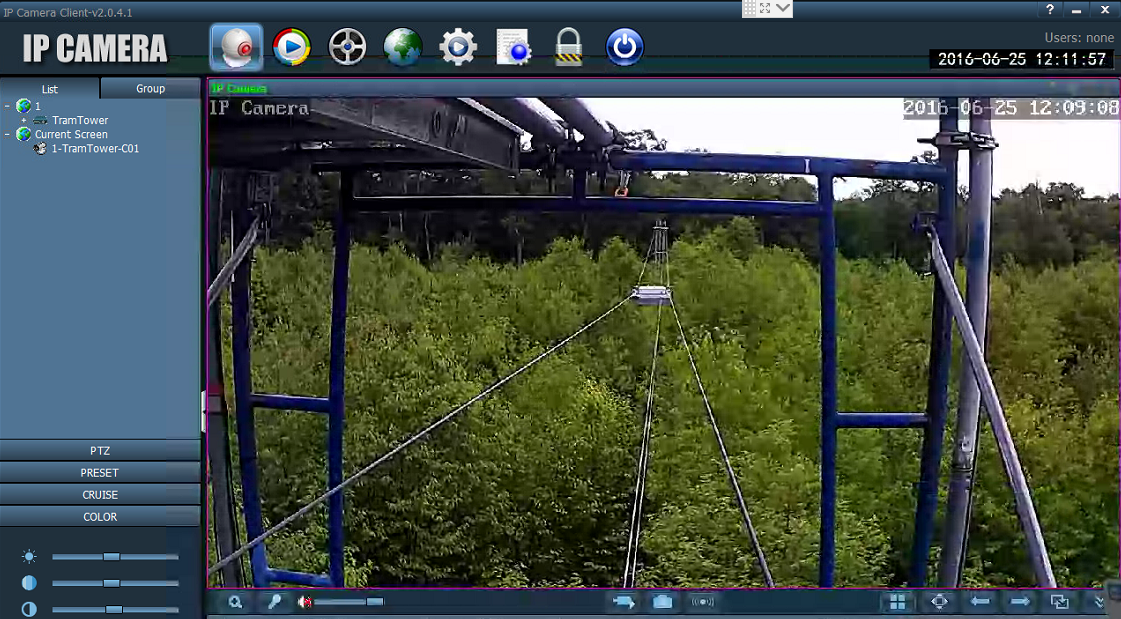You are here
Ecology Technology: Where Computer Science and Climate Change Collide
 In a time when unpredictable weather events like droughts and floods are on the rise and water is thought to be “the next oil” of the world, understanding water reserves in forests is extremely relevant. Our project at Harvard Forest focuses on transpiration—the process of water movement through plants—and strategies for effective long term observation of overall forest health. While there are a variety of creative methods for gathering information on transpiration and forest health, most of them are implemented on a tree-to-tree basis, or are tedious at the very best. Our project develops technology that we hope will give way to a simpler method of understanding large-scale forest health. It could even be useful in programs like NASA’s NISAR mission, which uses radar systems in space to produce images of the earth terrain below.
In a time when unpredictable weather events like droughts and floods are on the rise and water is thought to be “the next oil” of the world, understanding water reserves in forests is extremely relevant. Our project at Harvard Forest focuses on transpiration—the process of water movement through plants—and strategies for effective long term observation of overall forest health. While there are a variety of creative methods for gathering information on transpiration and forest health, most of them are implemented on a tree-to-tree basis, or are tedious at the very best. Our project develops technology that we hope will give way to a simpler method of understanding large-scale forest health. It could even be useful in programs like NASA’s NISAR mission, which uses radar systems in space to produce images of the earth terrain below.
About ten years ago, a small area of the Harvard Forest was clear cut and has since begun growing back. A previous team of undergraduate summer students designed and developed a robotic tram system to traverse above the canopy of the recovering forest and collect data. The tram, a metal box equipped with tools to measure light, heat, and forest “greenness,” trudges along 50 meters of cable between a pair of towers while relaying the data it collects back to a base station computer. The ultimate goal of this contraption is to incorporate a radar system which will be able to measure water content within the forest. Since water “reflects” significantly more of the radar’s signals than the surrounding conglomeration of trees, raspberry bushes and critters, the system is able to deduce just how much water is flowing through the forest below on an hourly, daily or yearly basis. This broad scale observation yields to a quicker and more accessible analysis of forest health—one that does not require individual tree health inspections or application of rough estimates to entire forest populations. (See Alex Widstrand's blog post for more on our project and a video of the tram in action!)
My role in this project is to tweak the tram system so that it can collect accurate and uninterrupted data by the time the radar system is incorporated. Within the tram’s main shell is a small computer similar to a Raspberry Pi computer called a BeagleBone board. This miniature computer is quite stubborn at times. It often has trouble connecting to the base station computer where the data needs to be sent, requiring somebody to make the trek down rocky paths and wage war against ticks, all to restart a computer. In an effort to solve this problem, I am working to implement a switch that will command the computer to restart from any remote location. I have also been testing code that will prompt the tram to return home if it has been away for more than an hour, preventing it from getting stuck in the middle of the towers. Another concern is that the tram will be affected by harsh weather since it’s relatively unshielded and exposed to the elements, so I’ve altered the existing code to identify thunderstorms or strong wind conditions and then stop the tram from departing its charging dock.
I’m also working on making the tram data more widely available through our project website. Soon, the website will have the option of controlling the tram actions (for people with authorized logins). It will also make the tram's status updates and data visible to the general public. I'm going to incorporate a variety of interactive graphs and visualizations to allow easy access to understandable information and potentially serve as a useful learning tool.
There is much still to be done with this project, and plenty will remain after our departure. As just about any computer science related topic goes, there will likely always be ways to improve and readjust the tram functions. As it reaches a more completed state, however, we hope that the project will provide an accessible way of measuring forest health over long periods of time and a valuable resource for even better technology for understanding the impacts of climate change.



